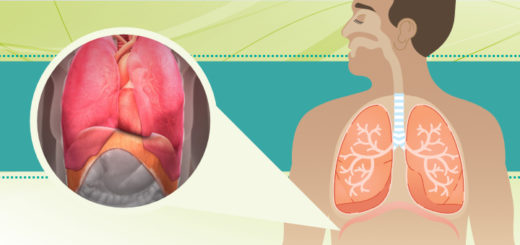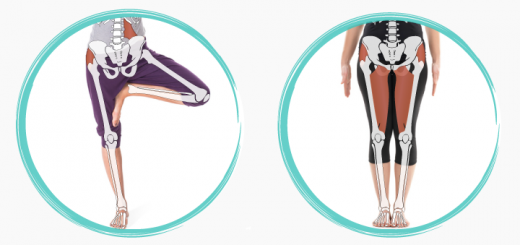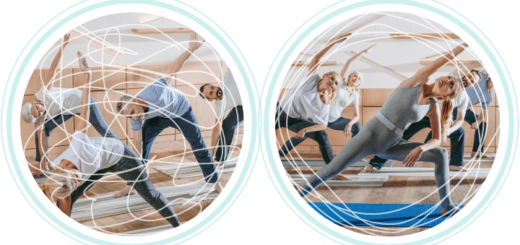How to protect your lower back and increase stability in any yoga pose
39Physical therapists know this. Pilates teachers know this. Athletes and dancers know this; how come yoga teachers are behind?
Recently one of the commentators on my blog, Michele, asked me: “Why don’t I hear yoga teachers talk more about “zipping up” (progressive abdominal contraction) in yoga classes?” I don’t know why. I do know that it is absolutely essential. Many yoga poses, if done without it, can be very risky to students’ backs and sacrums and just make the pose more unstable. What is this elusive “zip up”? Let’s explore. 
Today I observed my 2 year old son discover zip up. He was playing with his belly button and discovered that on the inhale it is easy to stick the belly out and on the exhale it is fun to pull it in. That entertained him for a while. This pattern represents our natural breathing pattern – when we breathe in, the diaphragm flattens and pushes down on the internal organs, causing the belly to stick out, since the organs have no other place to go. With every exhalation the belly relaxes, since the diaphragm goes back up. In yoga practice we piggyback on this natural pattern and intentionally contract the abdomen on the exhalation, drawing it in. IT DOES NOT HAPPEN NATURALLY, WE DO IT ON PURPOSE. Why?
Do an experiment. Stand with your hands on your hips as if you were holding a bucket of water. As you inhale, tip the pelvis forward, as if spilling the water forward. What are your back muscles doing? Contracting. What are your abdominal muscles doing? Stretching. As you exhale, tip your pelvis the other way, as if spilling the water back. What are your back muscles doing? Stretching. What are your abdominal muscles doing? Contracting. This experiment is meant to demonstrate the relationship between your lower back and your abdominal muscles. They have an agonist-antagonist relationship: when one is contracting, another one as passively stretching. Why is that important? Well, most of us have either weak or chronically contracted lower back muscles because of sedentary lifestyle, overuse, posture issues, patterns of movement – many different reasons. And many people, especially in the yoga community, have excessive lumbar lordosis (exaggerated curvature of the lower back). Do those issues go away when you step on the mat to do your yoga practice? Nope, you bring them with you. So next time you go into Virabhadrasana 1, your pelvis automatically tilts forward, because it’s easier. As a result, your lower back tightens even more, so instead of fixing the problem you exaggerate it.
Take a look at these two images. What is the main difference?
In Image 1 the lumbar curve is exaggerated, because the shoulders are aligned over the hips, the stance is too wide and abdomen is not contracted. Even though it looks like a nice back bend, the lower back is compromised and vulnerable to potential injury. In the yoga world this is called “Anga banga”(real Sanskrit word) – it’s when you are trying to do something good for yourself but end up hurting it. What’s the solution? Zip up! In Image 2 the shoulders are positioned slightly in front of the hips, lower back curve remains neutral and abdomen is contracted. The result – supported lower back, stronger core, better alignment, deeper awareness. Yes, the backbend might not be as deep, but we know better then compromise safety for the sake of contortion, right?
My students catch up on the idea of zipping up quickly. Any time I ask them: What can we do to make this pose (any pose) safer/more stable/stronger, they respond in unison: “Zip up!” Doing zip up in back bends protects your lower back, doing it in twists ensures that you twist from the center, instead of using arm leverage, doing it in forward bends takes you deeper into the pose in a safer way, etc. It’s one of those things that you really shouldn’t go without.
By the way, having developed “six pack” abs have nothing to do with having strong core. Abdominal crunches exercise Rectus abdominis muscles, whose job is to flex the trunk. They do not support your lower back. Transverse abdominis muscles that lie underneath serve that purpose, almost like an internal corset that holds things together. By progressively pulling the abdomen in toward the spine you activate those muscles. The term “zip up” is not really a term but an image that helps you visualize the process. Imagine putting on a tight pair of jeans. When you attempt to zip them up, you gradually pull your stomach in from the bottom toward the top to make it happen. This image usually works better for women, then for men 🙂 When we say “zip up”, we mean “progressive abdominal contraction from the pubic bone toward the navel”. “Zip up” is just faster and more visual.
Theoretically, we want to engage the zip up EVERY TIME WE EXHALE, for the duration of the yoga practice. This is the simplest way to develop core strength and support the lower back. It has other unexpected benefits. It trains your body to respond quickly if your balance is compromised. Consider my personal story: I was taking my rambunctious lab for a walk one time and turned to lock the door. He saw a squirrel and pulled so strongly that I went flying off the stairs. The thought that flashed through my head was “I am about to do a face plant on the cement walkway.” But my body responded differently. After years of practice, my core muscles contracted automatically, regrouping my entire body and I landed on my feet – no conscious decision on my part! This happens when you teach your body to behave a certain way through mindful training on the mat and the results show up off the mat. That’s why we do yoga anyway – not for it’s own sake, but to live happier, healthier and more fulfilled lives (with fewer injuries!)
Few words about bandhas. I often hear yoga teachers use the term “uddiyana bandha” in place of “progressive abdominal contraction”. It’s not the same thing. In general, teachings on bandhas vary from one yoga tradition to another. Sri Krishnamacharya was clear in his teachings: bandhas are done in a seated position for the purpose of affecting your body’s subtle energy, NOT structural support.
ZIP UP TECHNIQUE.
 When moving in-out of the pose: On the Exhalation progressively contract your abdomen from the pubic bone toward the navel; on the Inhale gradually release the contraction form the navel to the pubic bone.
When moving in-out of the pose: On the Exhalation progressively contract your abdomen from the pubic bone toward the navel; on the Inhale gradually release the contraction form the navel to the pubic bone.
When holding the pose: On the Exhalation progressively contract your abdomen from the pubic bone toward the navel and release it only partially on the Inhalation to maintain support. On the next Exhalation reengage the abdomen and on the Inhale again release partially. Continue for as long as you hold the pose. Partial release of the contraction on the inhalation allows you to breathe more fully, but remaining contraction of the lowest part of the abdomen maintains support for the lower back.
Do you teach progressive abdominal contraction to your students? Do you have an interesting way of presenting it?





















Great article – “Zip Up” love it.
Thanks Sarah!
This is fantastic – if all practitioners were following this advice, we’d have much less SI joint trouble and much more stability in the lower back. Thanks for drawing attention to the issue!
Thanks Andrea! I agree – such a small thing can make all the difference! Speaking of SI trouble, I am planning another post about the poor sacrum and what we can do to protect it. Stay tuned! P.S. love your screen name
Great info!!! Use it in class last night!
Thanks Helena! Did your students get the “zip up” thing?
Please add me to any mailing lists you have! I’m also a yoga therapist-in-training through AVI.
Sounds good Anna! You can also choose to follow this blog and you’ll be notified whenever we post anything. Stay in touch!
I really like this. After experiencing becoming overly “loosey goosey” and having my core require PT, I am now incorporating these concepts in classes. Fabo!
So glad you found it useful, Kristy!
Great article!!! Please add me to your email list if you have one. Thanks
Thanks Mary Beth! The easiest thing is to follow our blog; you’ll get an email every time we publish something. And we’ve got a lot of interesting stuff coming!
Hi Olga, I am having trouble feeling my low back contract. Does that mean I’m likely chronically contracting my back? Does that also mean it is weak? Im guessing it is. I have s curve scoliosis, and some sciatica down one leg. I have a desk job and am always very stiff during the work week. I walk in the evenings and spend my lunch breaks stretching (I just read one of your blog posts about not stretching). I really need to release tension in my low back and legs and am feeling overwhelmed about this. Can you offer my some tips on getting started? Thank you! Maureen
Hi Maureen! So sorry to hear about your back troubles. You are right, stretching might not be the best option for you right now; or at least, stretching by itself. Let’s do this: this upcoming week I will be doing a post on mini yoga practices, that can be very useful as a foundation. One of them will be specifically for the lower back. Choose to follow my blog and you will get a notification when it gets posted. Give the practice a try and then let me know how it goes. Please make sure to follow the instructions carefully; HOW you do it is just as important as WHAT you do. Another resource that you might find useful is a video by my teacher specifically for the lower back troubles: http://www.amazon.com/Viniyoga-Therapy-Back-Sacrum-Kraftsow/dp/B000U0C9UE/ref=sr_1_4?ie=UTF8&qid=1375023137&sr=8-4&keywords=yoga+therapy+for+back+pain It has three different short practices with explanation of different poses. Also, if you tell me where you live I might be able to recommend a qualified yoga therapist in your area. Does that help?
Thanks, I live near Charlotte, NC. I’ll check out the video you suggested and watch for your upcoming post.
Sounds good. I know 2 qualified yoga teachers in Winston-Salem, but I assume that would be too far for you?
yes, too far of a drive, but thank you for letting me know!
[…] Start on your hands and knees. Inhale: Lift your chest forward and up, pulling the shoulder blades down and lifting the chin slightly. Don’t let your shoulders move past your wrists. Exhale: Start to move back, gradually contracting your abdomen. Make sure to bring your elbows down first, then move your butt toward the heels. TRICK: On Exhalation do not round your upper back, like you would in a Cat pose. Think of pulling back with your tailbone, the rest of the body following. DO NOT FORGET TO ZIP UP! (To read more about “zipping up”, go here). […]
Ah!!!!You are woman after my own heart! This is the primary building block that all of the asanas I teach move from. I centralize most work from the pelvic floor on up…always starting class with ab work on the floor or the roller, having student feel their transverse abdominis as well as the complex muscles of the pelvic floor as stabilizers (allowing other body parts to move safely and with ease) rather than doing crunches. This is where I introduce my terminology which is “lengthen the tailbone down (or sometimes I say imagine pulling the tailbone towards the pubic bone), pull the navel in and up as the ribs pull into the midline, broaden through the collarbones, feeling the shoulder blades spreading across the back.” I then revisit the ribs, as most students allow them to slay when working with broadening the collarbones. Doing this work on the floor gives them a sense of what the body is doing in space as they have proprioceptive feedback as the feel the back body iron out on the floor. When we come into standing postures I can then give them the same cuing, referring pack to the core stabilization work on the floor. To me this is the most important thing we can teach to keep students safe, and to help create strong integrated bodies! Keep up the good work!!!!!
Thank you! I completely agree – start on the ground, build the awareness then take it into every posture. What is more more important then connecting to our center (literally and figuratively)? 🙂
Thanks for posting this! I’m new to the group. I’ve been teaching Pilates and Iyengar yoga for about nine years and am just completing my Doctor of Physical Therapy. Anyone who is not teaching this is asking for trouble. Why put your students at risk? Even for those who are the most flexible and symptom-free, if they don’t learn how to stabilize and better control that flexibility, they are hugely at risk for strain of their back as well as other regions. Additionally, I believe this gets to the heart of centering and balancing within an asana. Using that core control, by definition, means that we are moving outward from our center. Isn’t this what yoga is all about?
Welcome to our community, Sarah! Thank you for your thoughtful and beautifully articulated comment. Good luck with your new career!
Thanks! I’m looking forward to hearing more from this group.
Ooo, I really liked this, Olga: “Sri Krishnamacharya was clear in his teachings: bandhas are done in a seated position for the purpose of affecting your body’s subtle energy, NOT structural support.”
Thank you Andre! The whole subject of bandhas is fascinating to me, since I’ve had some pretty amazing experiences while working with them (in seated position :)) It’s just sad to me to see them diminished to a simple abdominal contraction or pelvic floor engagement, as they often are.
Great article! Thank you for your great work!
I just have question, where did you get this quote of Krishnamacharya….
Totally agree, but I would love to know the source.
Thank you once again for your great work and time;)
Thank you Sheli! Do you mean the statement about the bandhas? I heard it from my teacher Gary Kraftsow who had studied with Sri Krishnamacharya. So I don’t know if it’s written anywhere, but I would check The Heart of Yoga by TKV Desikachar; seems like an appropriate place for something like that 🙂
[…] Your exhalation can either be passive or active. With passive exhalation, the muscles that’s been contracting on the Inhale relax and return to their original position. With active exhalation you use your abdominal muscles to compress the abdomen and force the diaphragm upward. If you do your abdominal contraction in a gradual fashion as you exhale, it will help stabilize and support your lower back (read more about the progressive abdominal contraction). […]
Actually Krishnamacharya used bandhas in all positions, especially standing and taught this to his students. You can easily check this up in his books.
Thank you for your comment, Luc! Could you direct me toward specific resources where this is discussed? I would love to read it.
The striking point of the method (or approach?) is contained in the last few lines of the post: “zip up” on exhalation AND maintain it, if only partially, during the next inhalation. Full hold of the transverses’ contraction is clearly impossible because of the physiology of breathing, and a proper measure of this interplay represents a subtle transition from Science of Understanding to Art of Teaching.
Thank you for stressing this out Alexander, this is such an important point! We will be talking about it in much more detail when we discuss the backbending technique. Thank you for your comment!
This is exactly what I teach, although I take it a bit further, especially when coming from the floor up, to zip up as they transition and stack the spine systematically. It not only eradicated my back issues (which I had for ten years) but has helped so many of my students get their practice back. It’s a win-win!
Hi Olga – thanks for this post — hope there’s still response and activity here I think it was posted a while ago — I appreciated all you shared — but am I. Particular oursuing this’ Anga banga’ term you mentioned – the real Sanskrit term origins ( in language and I. Story) and its meaning are something I’m trying to find more dimensions to buy can’t cine up with any where else it is mentioned but in Your article – can you help?
Thanks again ?
Oops sorry some typos there – hope it reads through clearly for you anyhow – basically where can I learn more about anga banga as you mentioned it… Thanks
Hi Karen! Anga banga is a term that my teacher Gary Kraftsow uses and it is translated from Sanskrit. Unfortunately, I don’t know much about it beyond that, and I am not sure if I spell it correctly, but next time I see him I will be sure to ask!
Hi Olga
Thanks for your response – and for flowing up with your teacher when you get the chance — it’s an interesting concept to me and interested how they may have framed it – or if there were any more ancient texts – contemplations around it — either way a fun term indeed ?
What a great article, thank you. I need this more myself. I have been teaching this movement, but with complicated phrasing. I love “zip up”! What a great cueing tool. As always, your website is one of my favorites; I recommend it to my yoga teacher friends and students alike. 🙂
Does this apply to all backbends? Would you also apply the zip-up technique in camel pose (ustrasana)? Do you have some suggestions for the safest way to enter and exit this pose?
Thank you,
Dani